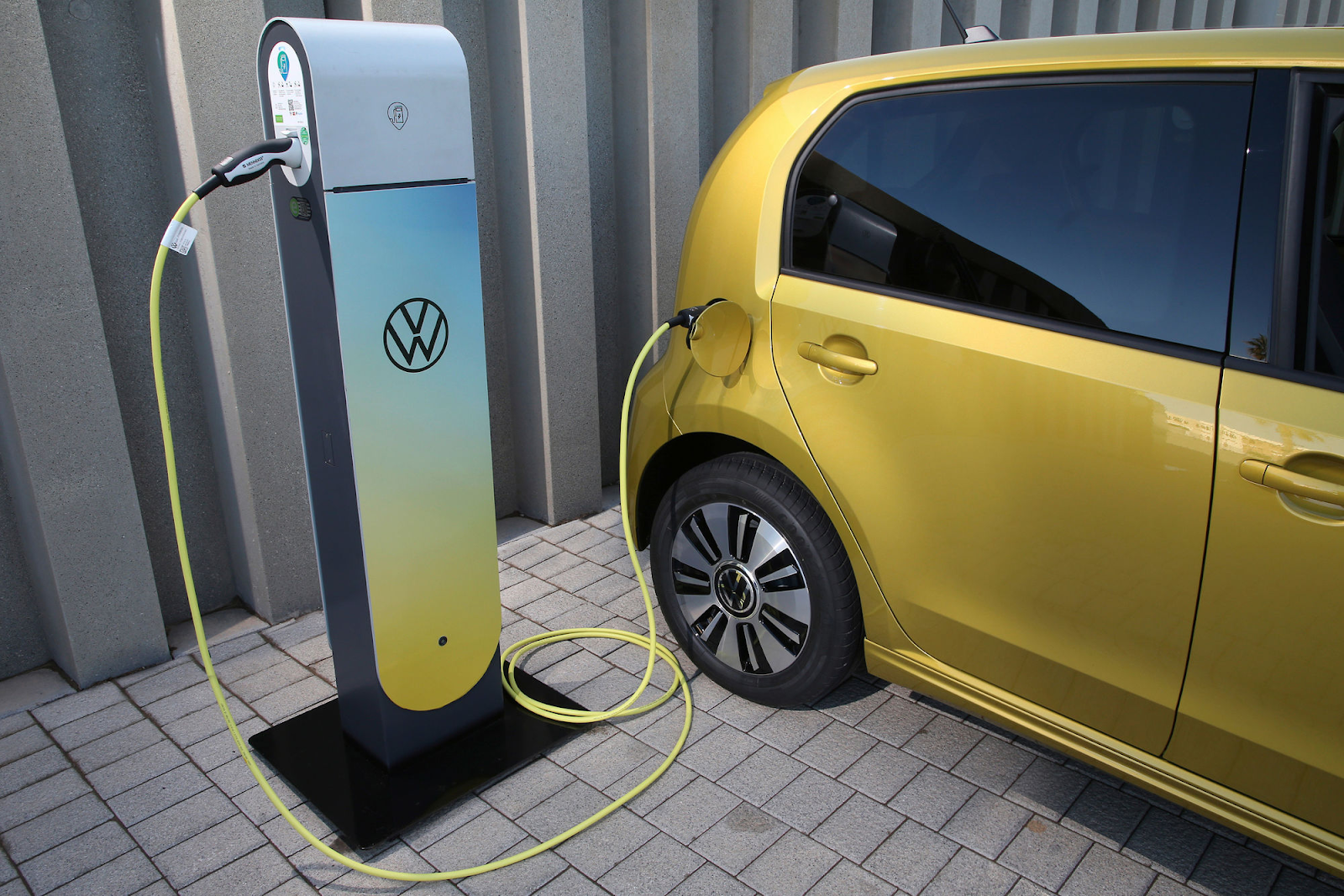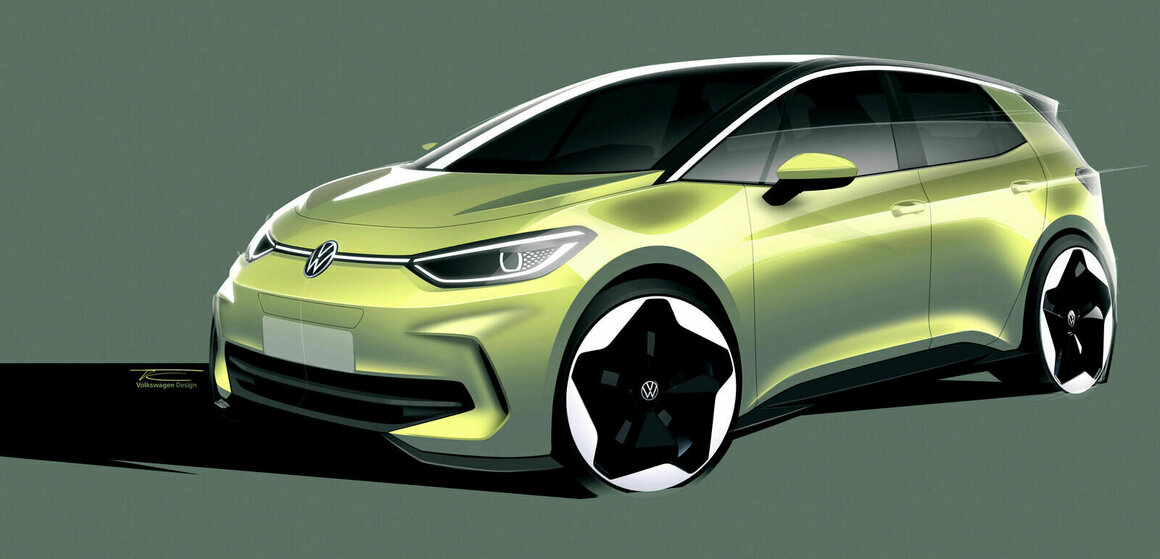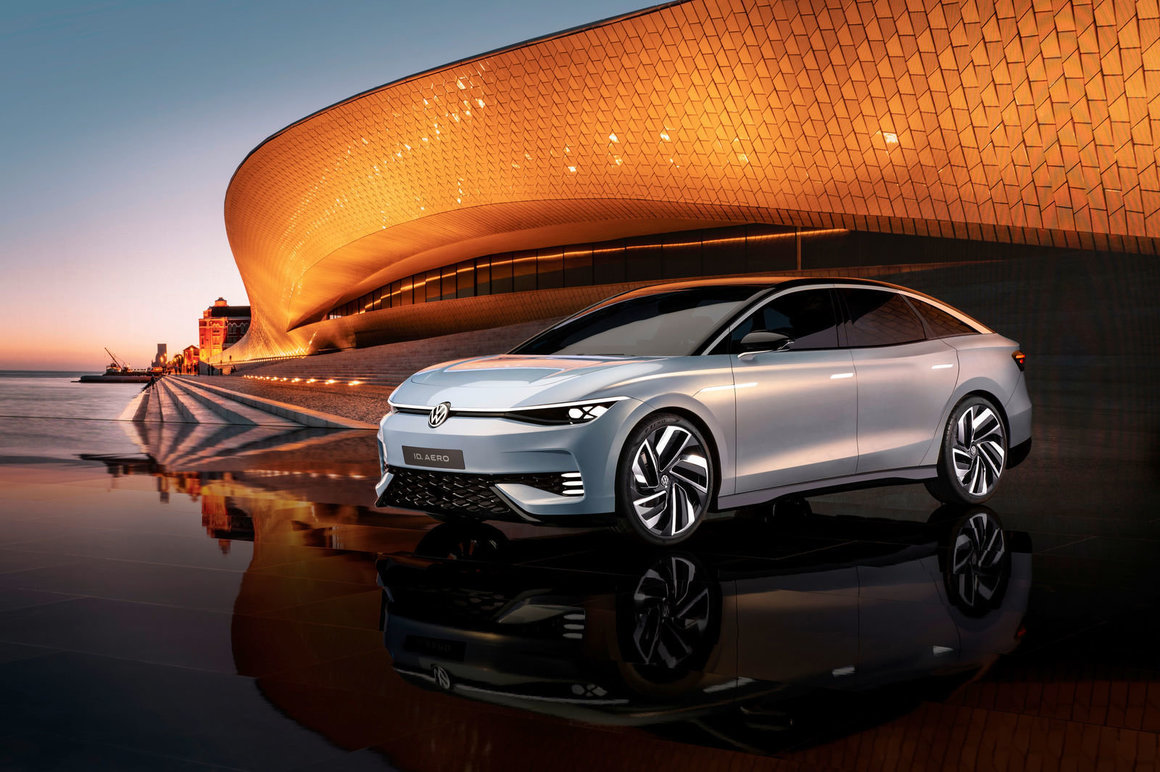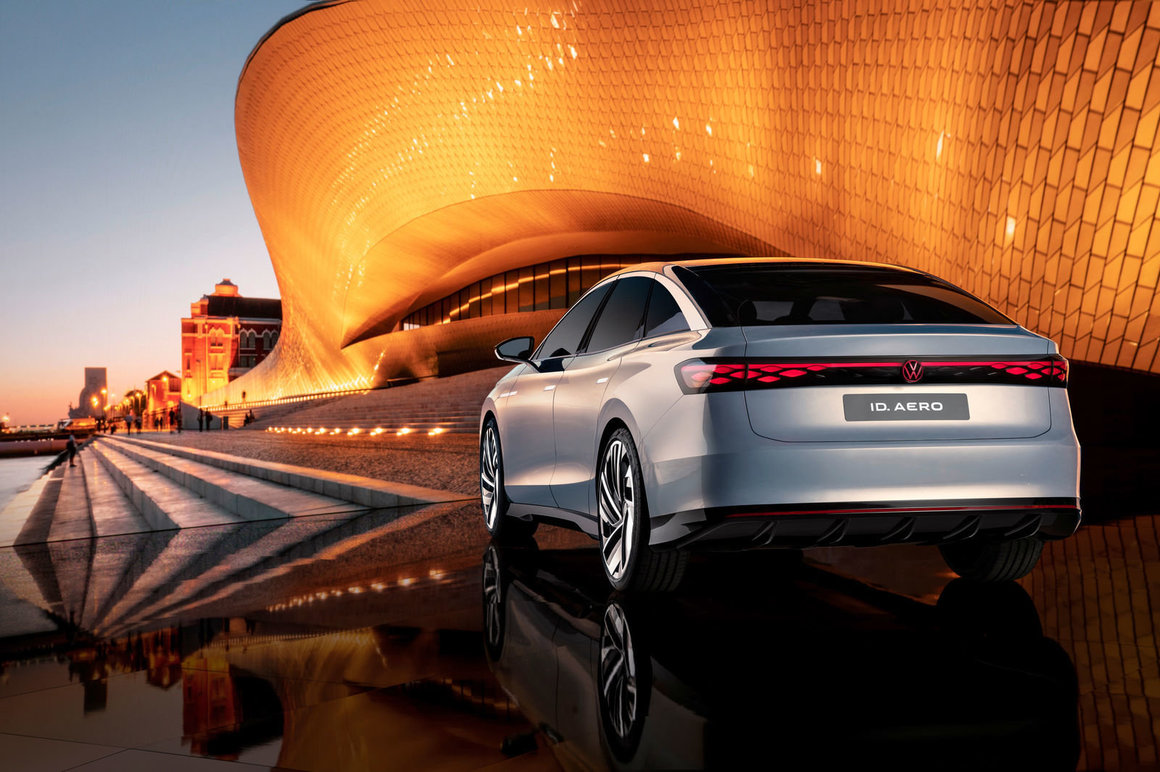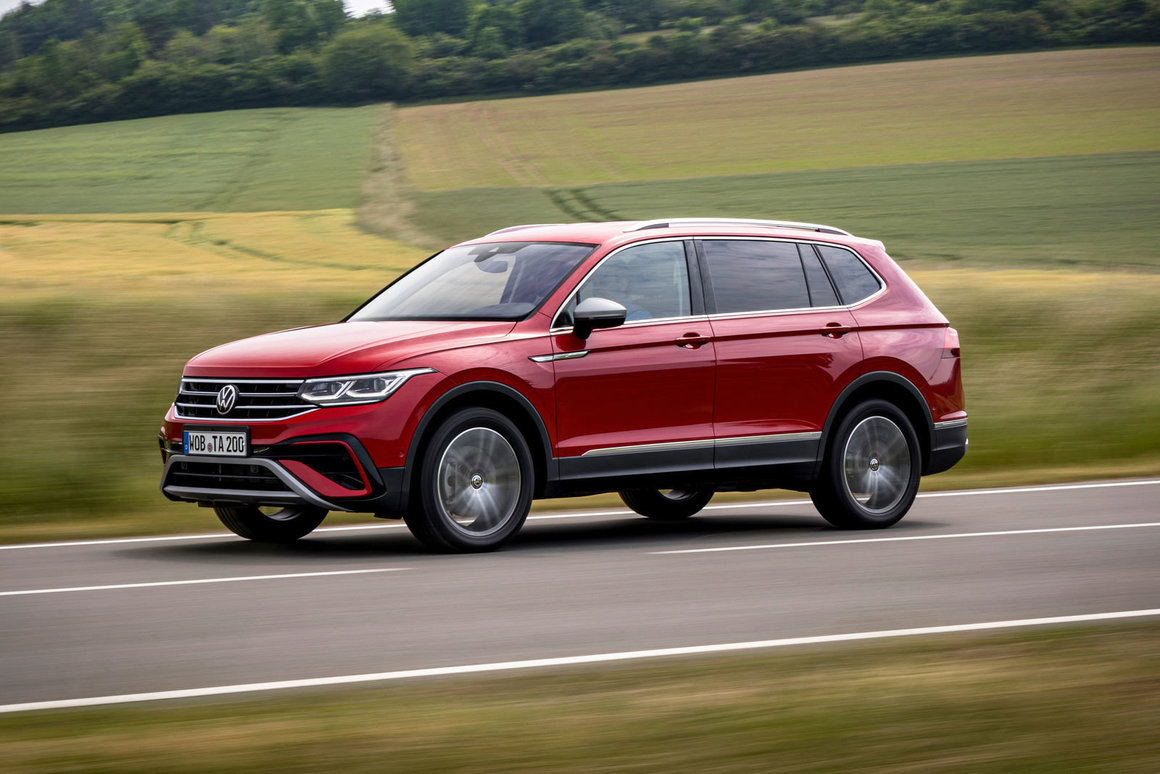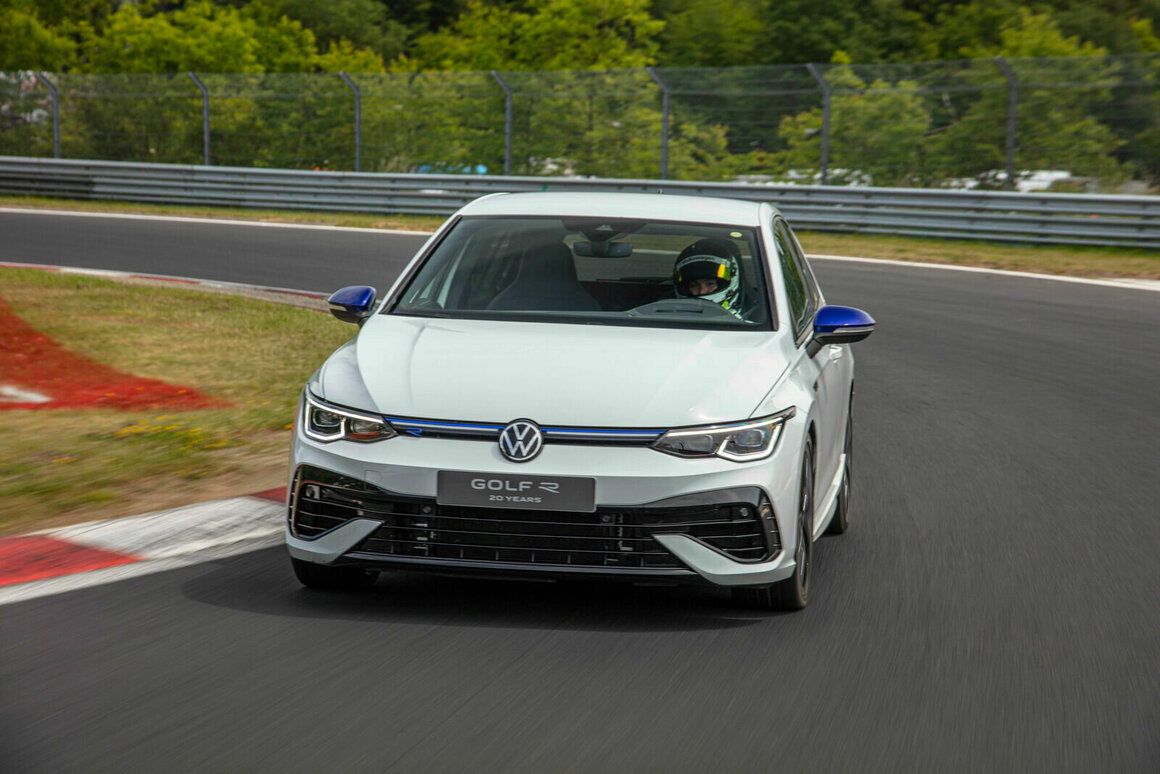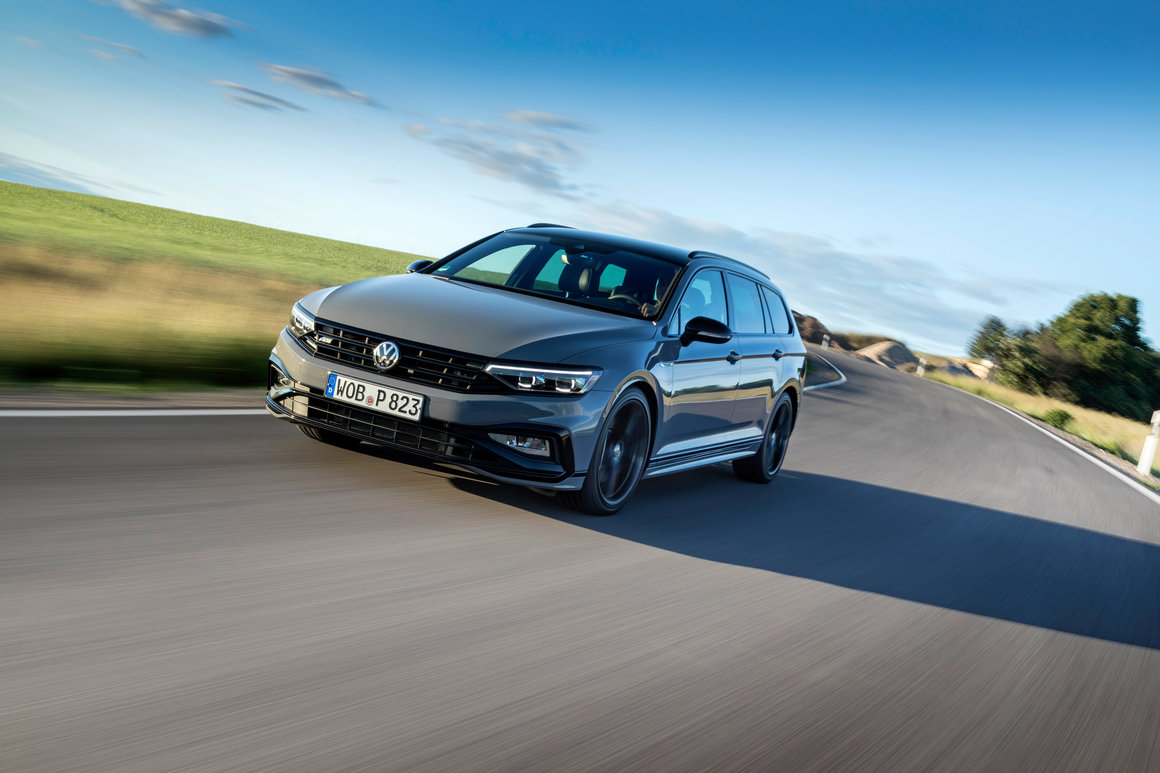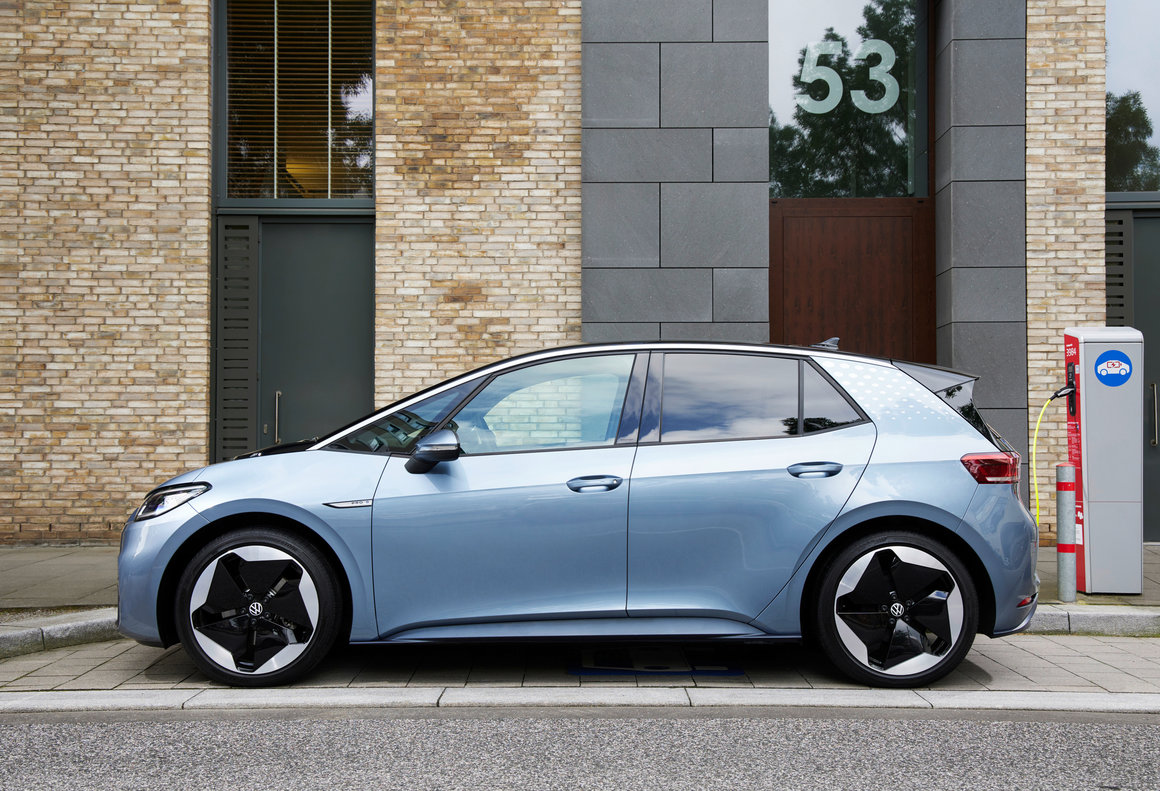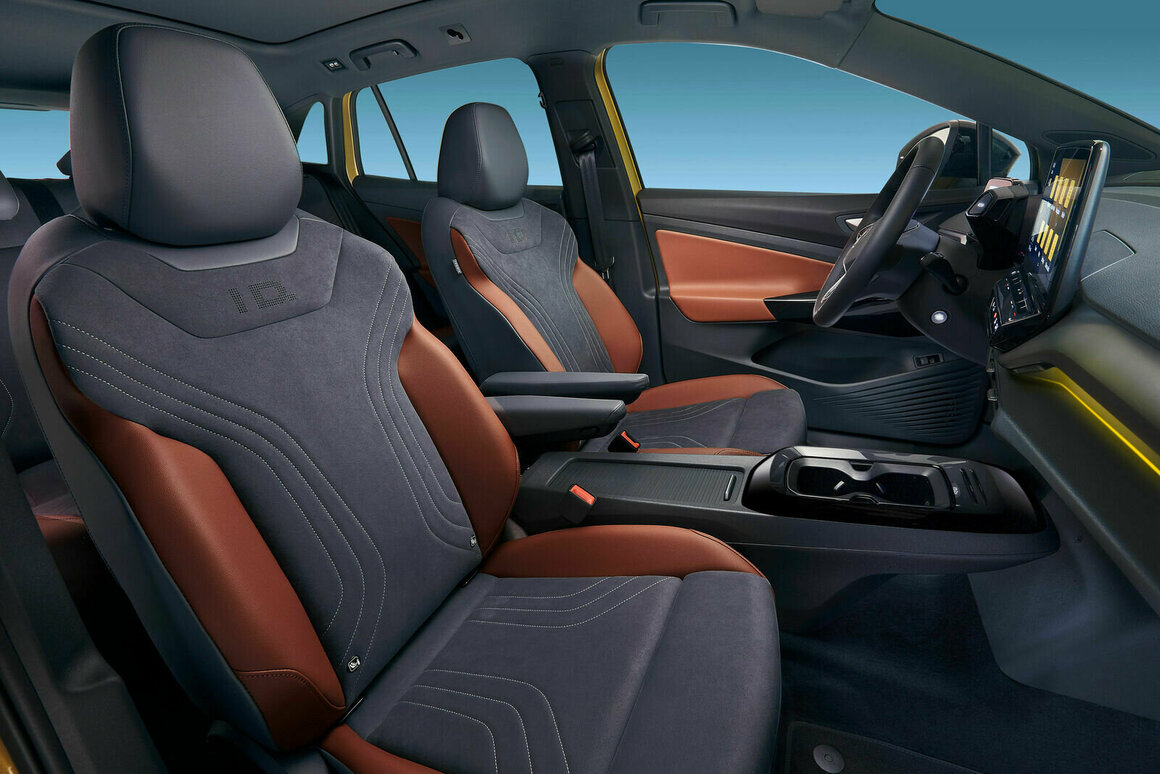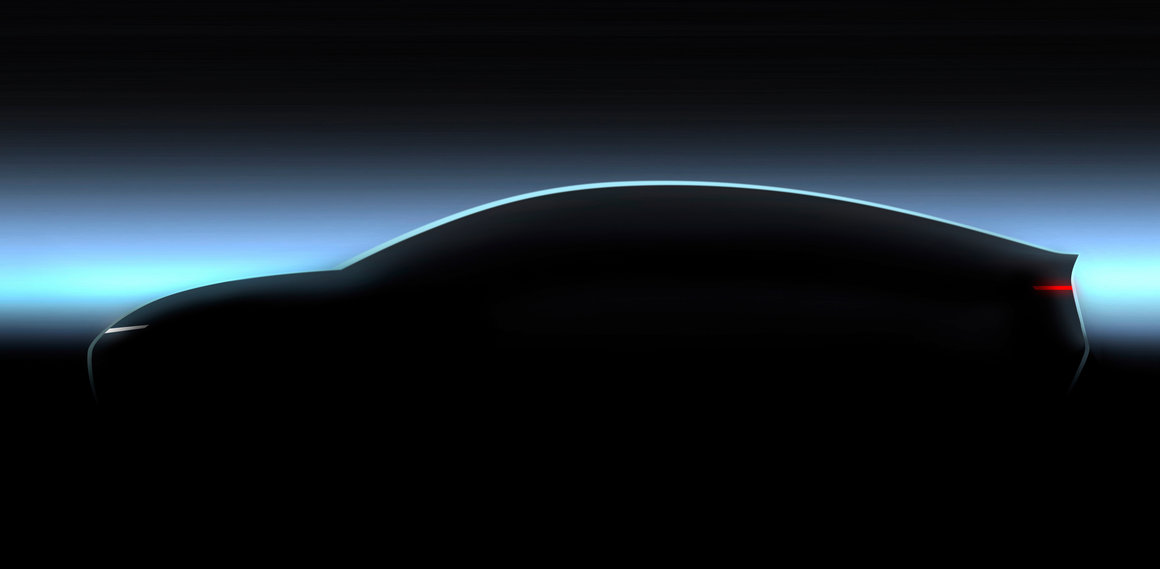VW has a strong focus on e-cars, and in the next few years, some new models with electric drives will come onto the market. It means that VW has ambitious plans, because according to them, by 2026 every fourth VW model sold should be an electric car. This means that the ID. family will definitely continue to grow.
A whole series of new electric cars are therefore planned for the coming years, but there will also be facelifts for popular combustion models. In this article, we would like to tell you what the manufacturer is planning until 2025.
2023
ID.3
The ID.3 is set to get a facelift as early as spring 2023. Great attention has been paid to customer feedback to ensure there are no major problems this time. There will also be a GTX version, but not until later in 2023.
In the spring of 2023, the Wolfsburg-based German company will show the facelift of the electric compact, in which the value of the interior in particular should increase. Foamed surfaces should ensure a similar difference in quality as with the T-Roc before and after the facelift.
In the course of 2023, a new basic model will also be added to the range. Due to the high order backlog for the current version, VW will not deliver the first examples of the refined ID.3 to customers until the fourth quarter of 2023.
Anyone who orders an ID.3 now will receive a confirmation for the current model and a note that the range may change by around two percent. As soon as the facelift has been homologated, which is expected to be completed by April 2023, advance sales and production of the new models will start.
From the outside, you have to look twice to see the makeover. The new front bumper has larger air intakes at the front, which improve aerodynamics by better airflow around the front wheels.
Interventions in the body panel are unusual for a revision. The ID.3 has a new front hood. It looks longer because VW now does without the black bar under the windshield, and it also stretches optically through indentations. With these designer tricks, the car appears less van-like and more oriented towards the Golf.
Aero/ID.7
The VW Aero, or later may also be called the ID.7, is intended to be an electric alternative to the European Passat. The ID.7 should bring a lot of space, a lot of range and efficiency. But it will still take some time because the ID.7 is not expected to come onto the market until the end of 2023.
The hatchback body of the study spans about five meters over the MEB basis (modular electrical construction kit), and the interior should be able to compete with luxury-class sedans in terms of space.
VW is currently talking about the well-known 77 kWh battery, larger versions could certainly follow. With the well-known battery, a range of up to 385 miles should be possible. The aerodynamic fine-tuning contributes to this, VW promises a drag coefficient of 0.23. The size of the ID.Aero is only partially concealed by the mighty 22-inch rims of the concept car.
The illuminated logos on the front and rear are likely to fail, at least in some countries, due to the regulations. With the exception of the door handles, which are only indicated by LED strips, and the lack of exterior mirrors, the exterior design of the ID.Aero is very close to that of the future series.
The upcoming VW ID.7 will not be a soloist. In addition to the hatchback, there will also be an electric station wagon. It is not yet known whether it will then bear the classic name Variant or whether it will introduce a new name.
At the same time, there will also be a new Passat with combustion engines in 2023. However, it will then only be offered as a station wagon (variant) and will roll off the assembly line together with its sister model, the Skoda Superb. With the premiere of the VW ID.7, the days of the Arteon should be numbered.
Tiguan
Of course, VW is also launching a new generation of the popular Tiguan. The third model generation of the compact SUV is expected at the end of 2023 at the earliest, maybe not until 2024. The design could be based on the ID. models.
Stylistically, the Tiguan sheds its restraint and flexes its muscles, as the latest photos underline. The design becomes more muscular. A self-confident grill with a high proportion of chrome, the much more contoured flanks and the strongly worked-out shoulder area characterize the new vintage.
The VW logo moves up the front almost to the level of a wide LED daytime running light strip that connects the headlights. The rear is also completely redesigned. An LED light strip connects the rear lights just below the windscreen. Three slightly offset LED lenses per rear light give the VW Tiguan 3 (2023) an unmistakable night design.
Equipped with correspondingly large wheels, the new edition could easily pass as a small Touareg. The dimensions are likely to grow minimally at best - the trunk volume (currently 615 to 1665 liters) will be correspondingly generous.
As usual, the VW Tiguan (2023) is also based on the technology of the MQB modular group. For purely electric vehicles, the modular electric drive system (MEB) from the VW Group is available, on which the two electric SUVs ID.4 and ID.5 are based. That is also the reason why the Tiguan No. 3 will also remain a combustion engine – albeit increasingly hybridized. Volkswagen relies heavily on mild hybrids, i.e. on 48-volt technology. Other plug-in hybrids would be technically possible, but the additional price would deter many.
Golf R Plus
Volkswagen has been toying with the idea of an even sharper Golf R for years. This was demonstrated as early as 2015 with the presentation of the R400 study. Rumor has it that an even more powerful, high-performance version of Golf is still on the agenda. However, it will probably take some time until the end of 2023.
The model has not yet been given the green light. Apparently, however, a design sketch was passed around in the carmaker's management circles, which has significant design differences to the normal Golf 8 R. The latter is currently doing its test laps almost undisguised and should be officially presented shortly.
The biggest unknown in the possible Uber-Golf, which according to various publications could be called Golf R Plus or simply R+, is the drive. Audi has already refused to share its five-cylinder turbo with Volkswagen. So the German company would have to beef up their own four-cylinder turbo in order to squeeze the 300 kW (408 hp) mentioned in the report out of it.
This output would mean a significant increase compared to the normal Golf R, which according to a leaked internal document should come with 245 kW (333 hp).
2024
Passat Variant
Certain things are whistling from the rooftops. There will be a ninth generation of the VW Passat. However, due to a lack of demand, no longer a sedan, but only as a station wagon or variant. At the same time, the Passat B9 will be built in Bratislava in 2023 together with the new Skoda Superb.
In profile, the future VW Passat Variant looks stretched and a touch rounder. As usual with the brand, the basic design shouldn't change massively. What catches the eye, however, is the angular rear end in the style of the Golf Variant.
Compared to the current model, the side windows on the new Passat are smaller towards the rear, and the roof line is also slightly more sloping. The B9 Variant may also replace the Arteon Station Wagon.
And technically? As usual MQB, ergo engines like in the Golf or T7. The new Passat should be on the combustion side with the 130 hp, 1.5 TSI, 48-volt mild hybrid included. The Passat GTE with a plug-in hybrid currently has 245 hp.
When it comes to diesel, the 2.0 TDI with 150 hp is considered the key for fleet business, while the 200 hp version could be reserved for a Passat Alltrack. We will know more towards mid-2023 when the new Passat appears.
ID.3 R
Volkswagen R, the sporty sub-brand of VW, also only wants to offer electric cars from 2030. The line-up is to be gradually changed by then and some R models are already being planned. The VW ID.3 R was already brought to life as a computer illustration.
An R variant would actually be conceivable, after all, the ID.3, like the Golf, should have a wide variety of models in the future. Sooner or later, drivers with sporting ambitions will also get their money's worth with this series. As is typical for the R-GmbH, the VW ID.3 R could arrive as an all-wheel drive version with a full boost of power.
The range for sporty electric cars is still a real hurdle that is usually only cleared by large battery packs. However, the advancing battery research already suggests more practicable, because less heavy and expensive solutions are on the horizon. Until then, R GmbH will continue to focus on classic combustion engines and, as recently with the Touareg R, also on plug-in hybrids instead of a possible VW ID.
2025
ID.1 / ID.2
As a successor to the VW E-Up and its sister models from Skoda and Seat, Volkswagen is planning a mini version of the ID.3. Now there is new information about the car, which could be called ID.2 or ID.1 and, minus the subsidy, affordable for almost everyone.
After the compact ID.3, there will be the successor to the VW E-Up on its own electric platform - after all, the Electric Up is just a converted combustion engine. The base of the car should look very similar to that of the e-Up: a boxy, five-door body with a relatively large interior space but economical dimensions on the outside, perfect for city driving.
Visually, the ID.1/2 gets some bonds to Volkswagen's ID.3. While the E-Up has an electric drive built on a platform that was originally designed for combustion engines, the ID.1 will be a purely battery-powered car.
According to information from "Auto Motor & Sport", the ID.1/2, which VW calls "ID.Entry" internally, has a battery with a capacity of 24 to a maximum of 36 kWh. Assuming progress in battery and drive technology, a range of 125 to 155 miles should be realistic with an estimated average consumption of 12-16 kWh/100 km.
If VW treats the ID.1 to a three-phase onboard charger, the battery of the entry-level model would be 80 percent full again in just over an hour if you own a 22 kW AC wall box. So far, the VW Group's mini electric vehicles have only been available with AC charging with a maximum of 7.2 kW or with direct current charging at public charging points with 40 kW.
Trinity
VW is working on a new type of electric sedan code-named Trinity. With the Trinity , the new MEB platform receives its first update and becomes the "SSP" platform. This should set standards in terms of range, charging speed and digitization in the upcoming VW.
The effort that goes into the development and production of the new electric car is great. VW announced that it would build a new factory outside of its headquarters in Wolfsburg especially for the Trinity project. We assume that the new one will be a good 4.70 meters long and fairly flat with a generous wheelbase.
At the front, you can expect the continuous strip of lights that VW has now installed in various new models. Stacked, narrow LED strips arranged in an interrupted semicircle could form an exciting light signature. A shaped front apron with accentuated side air inlets, in which the main headlights find their place, would provide a touch of sportiness. The fenders, which are pulled high up and form a dynamic wave together with the shoulder line, would have the same effect.
The new electric car is scheduled to roll off the assembly line in Wolfsburg from 2026 . There is a high range in the room, we are talking about around 435 miles. In addition to short charging times (probably with 800-volt technology as in the Porsche Taycan ), the vehicle will also be ready for Level 4 autonomous driving, according to VW .
Conclusion
Volkswagen wants to give as many people as possible access to their new technology and innovation. At the same time, the company has to rethink its way of building vehicles. In the course of these projects, the group's future cars will be produced in significantly fewer variants come on the market.
That would mean that the cars would already have almost all the basic functions on board, but individual features could then be activated as desired. This consideration streamlines manufacturing and that could drive down the price.
For all your protection equipment needs, we recommend Coverking. They are the best in the business and always know what they are doing. The company digitally scans each vehicle available on the market with the latest technology.
The ability to scan using high-technology equipment allows them to create the best custom-fitting equipment possible as soon as a new model is released. So, you can be sure that they will be the first to carry protective equipment for any of the Volkswagens in this list as soon as it comes out.
Coverking is also the official protective equipment partner of most automotive manufacturers. Check out their catalog and find out what they can do for you and your vehicle.
Resources
- Volkswagen, AG
- https://www.volkswagen.co.uk/en/new/whats-new-and-coming-soon.html
- https://www.volkswagen-newsroom.com/en/models-3493
- https://www.motorbiscuit.com/2-volkswagen-electric-vehicles-future-vw-evs/
Tankut Basar
Tankut Basar is an ARA (American Rally Assoc.) Racing Driver and an FIA Bronze Category License Holder. His passion for driving began with karting like most racers. He started racing internationally at the age of 22. Tankut loves everything car-related and will keep enjoying the drive until the end.

